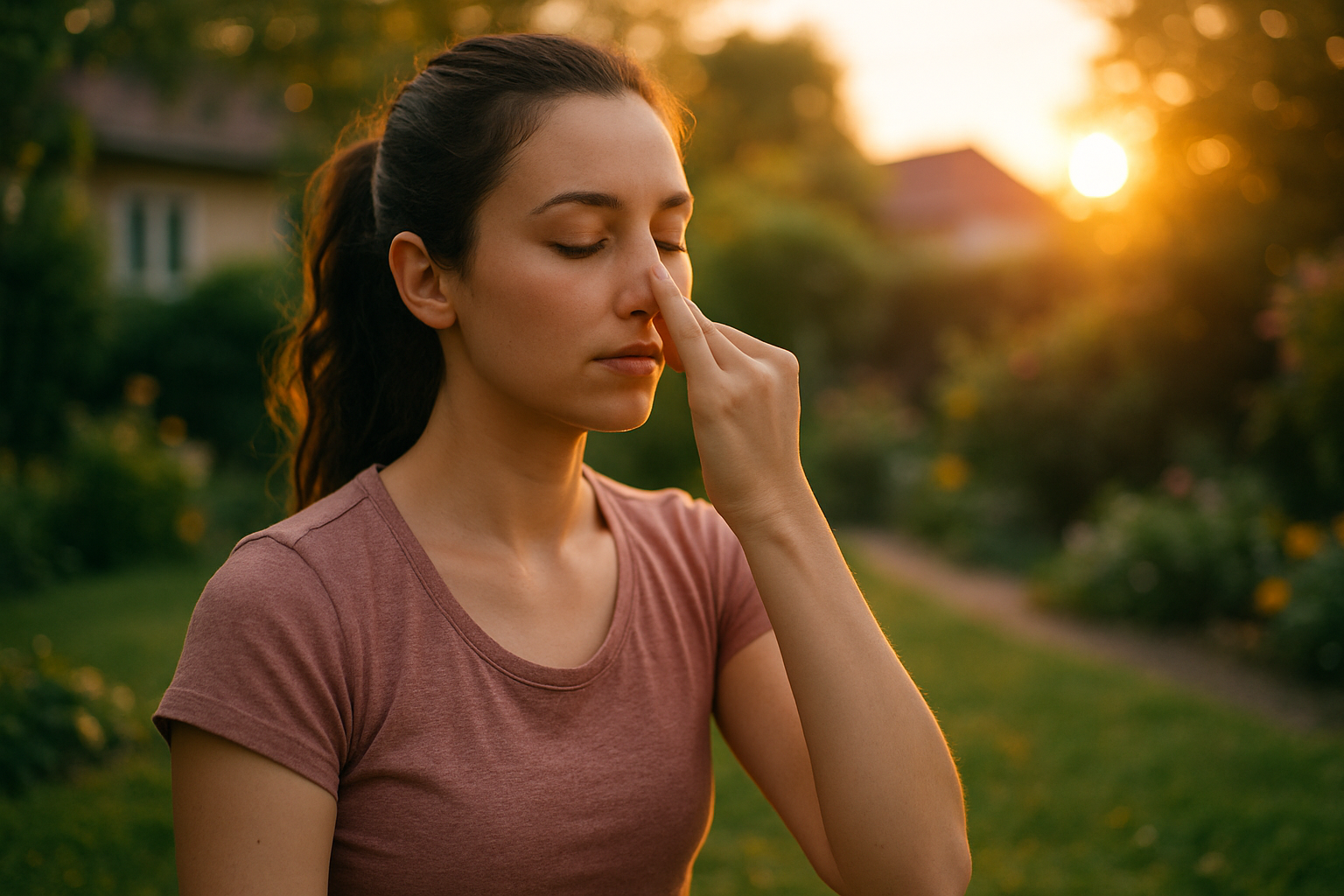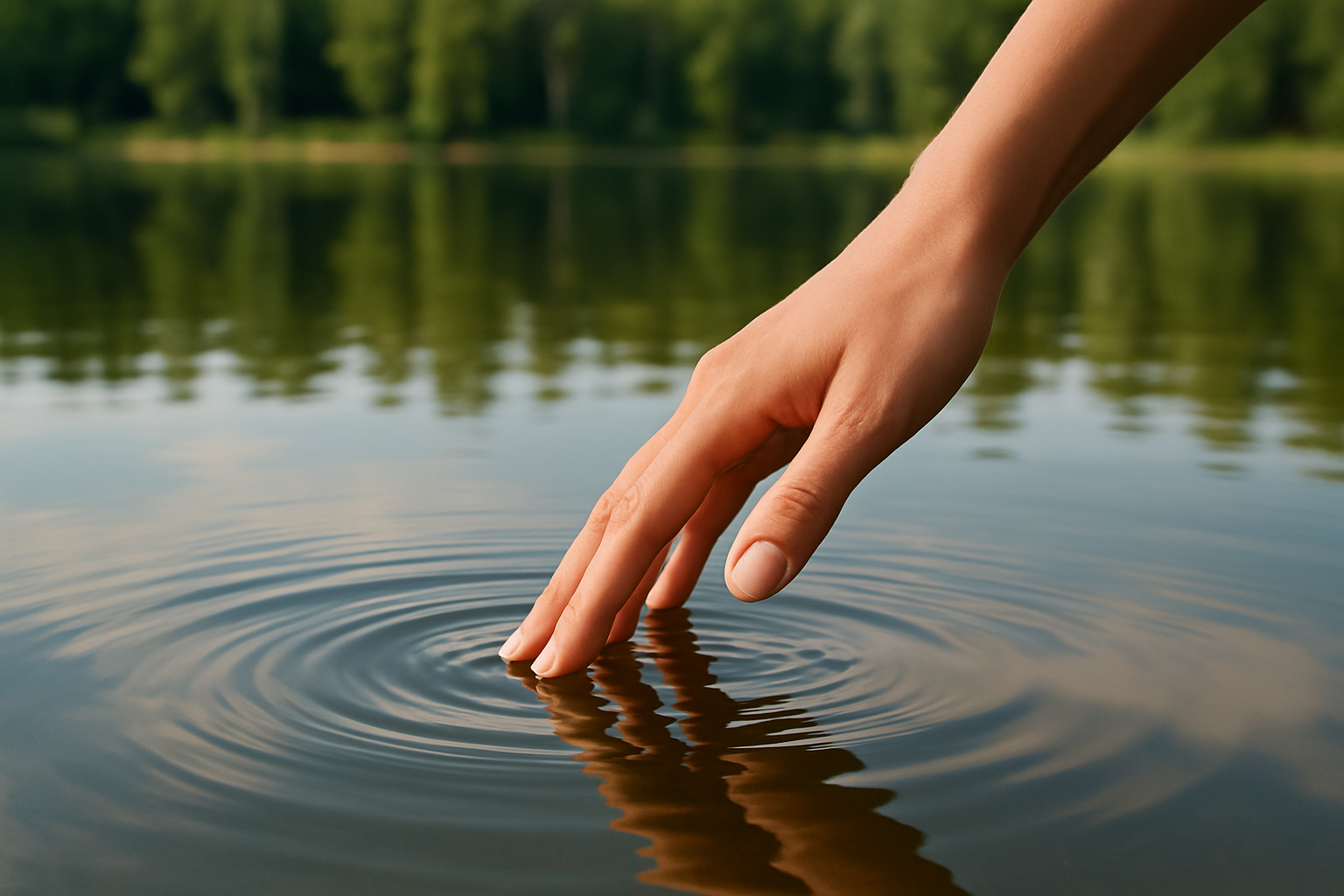That floating feeling. You know the one—like you're somehow disconnected from your own body, watching your life happen from a distance rather than actually living it. Your thoughts are scattered, your emotions feel overwhelming, and you can't shake the sensation that you're not quite... here.
You're not losing your mind. You're just ungrounded.
In our hyperconnected, always-on world, losing touch with our physical presence and energetic center is almost inevitable. We spend hours in our heads—thinking, planning, worrying, consuming information—while our actual bodies and spirits drift like untethered balloons.
Grounding isn't just some mystical concept reserved for yoga retreats and meditation circles. It's a practical, necessary skill for navigating modern life with your sanity intact. And the best part? You don't need special equipment, expensive courses, or even a single crystal to master it.

What Does It Actually Mean to Be Grounded?
Being grounded means feeling centered, present, and connected to your physical body and the current moment. It's the opposite of feeling scattered, anxious, or like you're living in your head all the time.
When you're properly grounded, you feel stable and secure, like you have roots extending deep into the earth. Your thoughts are clearer, your emotions are more manageable, and you have a sense of being fully inhabiting your own life rather than watching it from the sidelines.
From an energetic perspective, grounding helps you discharge excess energy that's making you feel jittery or overwhelmed while simultaneously drawing up stable, nourishing energy from the earth. Think of it like being a tree—your roots go deep for stability and nourishment, while your branches can sway with the wind without breaking.
Grounding is especially crucial for empaths and highly sensitive people who tend to absorb emotions and energy from their environment. Without proper grounding, all that external energy has nowhere to go and just swirls around inside you, creating chaos.
Signs You Need Grounding
Sometimes we're so used to feeling ungrounded that we don't even realize it's not normal. Here are the telltale signs that you need to reconnect with your center:
Mental signs:
- Racing thoughts that jump from topic to topic
- Difficulty concentrating or focusing
- Feeling spacey, foggy, or like you're in a dream
- Constant worry or anxiety about future events
- Feeling like you're watching your life rather than living it
Emotional signs:
- Emotions that feel overwhelming or out of control
- Sudden mood swings for no apparent reason
- Feeling overly sensitive to other people's emotions
- Difficulty processing or understanding your feelings
- Feeling emotionally "raw" or vulnerable
Physical signs:
- Clumsiness or feeling disconnected from your body
- Restlessness or inability to sit still
- Dizziness or lightheadedness
- Headaches, especially at the top of your head
- Feeling like you're floating or not quite in your body

The Science Behind Grounding
While grounding has spiritual and energetic components, there's also solid science backing up its benefits. Research shows that direct contact with the earth's surface (called "earthing") can reduce inflammation, improve sleep, and decrease stress hormones.
The earth has a natural electrical charge, and our bodies are designed to be in contact with it. When we're constantly insulated by rubber shoes, concrete, and elevated living spaces, we lose this natural electrical connection, which can contribute to inflammation and various health issues.
Beyond the physical earthing research, grounding techniques work by activating your parasympathetic nervous system—the "rest and digest" response that counteracts stress and anxiety. When you're grounded, your body literally functions better.
Emergency Grounding Techniques
Sometimes you need to get grounded fast—in the middle of a panic attack, during a stressful meeting, or when you're feeling completely overwhelmed. These techniques work in minutes, not hours:
The 5-4-3-2-1 Technique
This sensory grounding technique brings you immediately into the present moment. Name: 5 things you can see, 4 things you can touch, 3 things you can hear, 2 things you can smell, and 1 thing you can taste. This forces your awareness out of your head and into your physical senses.
The Root Visualization
Sit or stand with your feet flat on the floor. Close your eyes and imagine roots growing from the bottom of your feet deep into the earth. Visualize these roots anchoring you, drawing up stable earth energy while letting any excess or chaotic energy drain away. This works even if you're on the 20th floor of a building.
The Physical Reset
Press your palms firmly against a wall, desk, or the ground. Feel the solid surface against your hands. Stomp your feet three times. Clap your hands loudly. These physical actions help bring your consciousness back into your body and interrupt spiraling thoughts.
Breathing Techniques for Grounding
Your breath is the fastest way to shift your state and ground your energy. These techniques work anywhere, anytime:
Box Breathing
Breathe in for 4 counts, hold for 4 counts, breathe out for 4 counts, hold empty for 4 counts. Repeat 4-8 times. This technique balances your nervous system and creates a sense of stability and control. It's used by Navy SEALs and emergency responders for good reason.
The Grounding Breath
Inhale slowly while imagining you're drawing energy up from the earth through your feet. Exhale slowly while imagining any scattered or anxious energy flowing out through your feet into the ground. Continue for 5-10 breaths, really visualizing this energy exchange.
Belly Breathing
Place one hand on your chest, one on your belly. Breathe so that only the hand on your belly moves. This activates your diaphragm and parasympathetic nervous system, naturally grounding your energy and calming your mind.

Physical Grounding Practices
Sometimes you need to get into your body to get grounded. These physical techniques are especially helpful for people who live in their heads:
Barefoot Earth Connection
Take off your shoes and socks and stand directly on the earth—grass, sand, dirt, or even concrete. Spend at least 10 minutes just standing there, imagining roots growing from your feet. This is actual "earthing" and provides both physical and energetic benefits.
The Body Scan
Lie down and slowly focus on each part of your body, starting from your toes and moving up to your head. Notice any tension, sensations, or areas that feel disconnected. This practice helps you inhabit your entire body rather than just existing in your head.
Weighted Sensation
Use a heavy blanket, or simply place your hands on your chest or belly and apply gentle pressure. The weight helps you feel your physical boundaries and brings your awareness into your body. This is especially helpful for people who feel like they're floating or disconnected.
Water-Based Grounding
Water is incredibly grounding and can help wash away scattered energy while connecting you to your body:
The Grounding Shower
While showering, imagine the water washing away all scattered, anxious, or excessive energy. Feel the water temperature on your skin. Notice the sensation of being in your body. Set the intention that you're cleansing not just your physical body but your energetic body as well.
Cold Water Face Splash
Splash cold water on your face, wrists, and back of your neck. The cold water activates your vagus nerve and immediately brings you into your body and the present moment. This is perfect for office bathrooms or when you need a quick reset.

Workplace Grounding (Stealth Mode)
You can ground yourself at work without anyone noticing. These techniques are perfect for office environments:
Desk grounding: Place both feet flat on the floor and press your palms against your desk. Feel the solid surfaces and imagine roots growing from your feet through the building into the earth.
Bathroom reset: Use bathroom breaks for quick grounding. Splash cold water on your wrists, do a few box breaths, or practice the 5-4-3-2-1 technique.
Chair rooting: While sitting in meetings, imagine roots growing from your sitting bones down through the chair and floor into the earth. No one will know, but you'll feel more centered and present.
Pencil grounding: Hold a pen or pencil firmly in your hand. Focus on its weight, temperature, and texture. This helps bring your awareness into your physical senses and out of overwhelming thoughts.
Movement-Based Grounding
Sometimes the best way to ground scattered energy is to move your body:
The Grounding Walk
Walk slowly and deliberately, paying attention to each step. Feel your feet making contact with the ground. Notice the rhythm of your movement. This is especially powerful when done barefoot on natural surfaces, but works anywhere.
Yoga Poses for Grounding
Mountain Pose, Child's Pose, and any standing poses help you feel connected to the earth. Hold each pose for at least 30 seconds, focusing on the points where your body touches the ground.
Dance It Out
Put on music and move your body however feels good. Dancing helps discharge excess energy while reconnecting you with your physical self. Focus on how your feet feel against the ground and how your body wants to move.
Creating Grounding Rituals
The most effective grounding happens when it becomes a regular practice rather than something you only do in crisis moments:
Morning grounding routine: Start your day with 5 minutes of grounding—whether it's barefoot time in your yard, a grounding visualization, or simply placing your feet flat on the floor while drinking your coffee.
Transition rituals: Use grounding techniques when transitioning between activities, locations, or energy states. This helps you stay centered throughout the day rather than accumulating scattered energy.
Evening discharge: Before bed, do a grounding practice to discharge the day's accumulated energy. This improves sleep quality and helps you wake up more centered.

Grounding for Empaths and Highly Sensitive People
If you're highly sensitive to other people's emotions and energy, grounding is especially crucial. Here are targeted techniques:
Energy boundaries: Before entering crowded or emotionally intense spaces, visualize roots growing from your feet and a protective bubble around your body. This helps you stay grounded in your own energy.
Regular discharge: Highly sensitive people need to discharge absorbed energy more frequently. Make grounding a daily practice, not just an emergency measure.
Salt baths: Epsom salt baths are incredibly grounding and help clear absorbed energy. Soak for 20 minutes while visualizing any energy that isn't yours flowing out into the water.
When Grounding Feels Difficult
Sometimes grounding techniques don't work immediately, especially if you've been ungrounded for a long time. This is normal. Here's what to do:
Start small: If 10 minutes of grounding feels overwhelming, start with 30 seconds. Build your grounding capacity gradually.
Try different techniques: Not every grounding method works for every person. Experiment to find what resonates with your body and mind.
Be patient: If you've been living in your head for years, it takes time to feel comfortable in your body again. Grounding is a skill that improves with practice.
Seek support: If you consistently struggle with grounding, consider working with a therapist, especially one familiar with somatic approaches or trauma-informed care.
The Long-Term Benefits of Regular Grounding
When grounding becomes a regular practice, the benefits compound over time:
Your anxiety levels decrease because you're not constantly living in future worry or past regret. Your decision-making improves because you're operating from a centered, clear place rather than scattered confusion. Your relationships get better because you're fully present rather than distracted or overwhelmed.
You become more resilient to stress and better able to handle challenging situations without losing your center. Your intuition gets stronger because you're connected to your body's wisdom rather than just your mental chatter.
Most importantly, you start actually living your life instead of just thinking about it. You become the inhabitant of your own experience rather than a distant observer.
Your Grounding Toolkit
Grounding isn't complicated or mystical—it's a practical life skill that anyone can master. Whether you use breathing techniques, physical practices, visualization, or simple earth connection, the key is finding what works for you and doing it consistently.
Start with one or two techniques that appeal to you. Practice them when you're feeling calm so they're available when you need them most. Remember, the goal isn't to never feel scattered or overwhelmed—it's to have reliable tools for returning to your center when life pulls you off balance.
Your body and spirit are designed to be connected, present, and grounded. These techniques simply help you remember what you already know: how to be fully here, fully yourself, fully alive.
Take a deep breath, feel your feet on the ground, and welcome yourself home to your own life.
